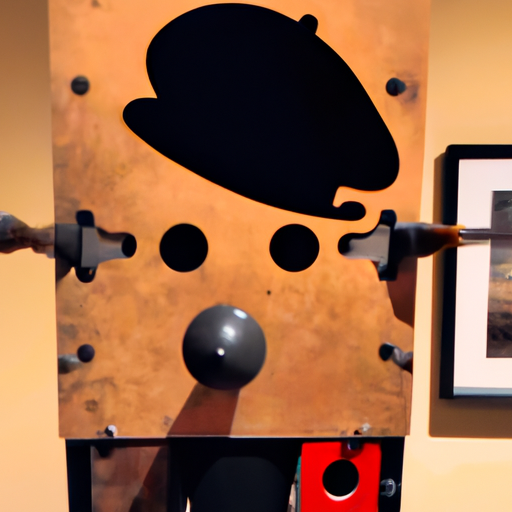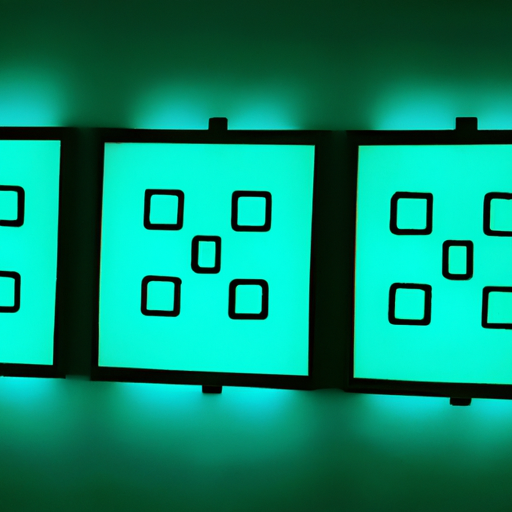
-
Table of Contents
- Surrealism’s Impact on Graphic Design
- The Origins of Surrealism
- The Influence of Surrealism on Graphic Design
- 1. Experimentation with Typography
- 2. Juxtaposition and Unexpected Combinations
- 3. Dreamlike Imagery and Symbolism
- 4. Challenging Traditional Composition
- Case Studies: Surrealism in Graphic Design
- Case Study 1: The Persistence of Memory by Salvador Dalí
- Case Study 2: René Magritte’s Surrealist Posters
- The Continued Relevance of Surrealism in Graphic Design
- Conclusion
Surrealism’s Impact on Graphic Design

Surrealism, an artistic and cultural movement that emerged in the early 20th century, has had a profound impact on various art forms, including graphic design. With its emphasis on the irrational, dreamlike, and subconscious, surrealism challenged traditional artistic conventions and opened up new possibilities for visual communication. In this article, we will explore the influence of surrealism on graphic design and how it has shaped the field into what it is today.
The Origins of Surrealism
Surrealism originated in the 1920s as a literary and artistic movement led by André Breton. It aimed to unleash the power of the unconscious mind and explore the realm of dreams, fantasies, and the irrational. Surrealists sought to break free from the constraints of rationality and tap into the deeper layers of human consciousness.
Artists like Salvador Dalí, René Magritte, and Max Ernst were at the forefront of the surrealist movement, creating visually striking and thought-provoking works that challenged the viewer’s perception of reality. These artists often combined unexpected elements, juxtaposed unrelated objects, and distorted familiar forms to create a sense of disorientation and surprise.
The Influence of Surrealism on Graphic Design
Surrealism’s impact on graphic design can be seen in various aspects, from typography and layout to imagery and composition. Here are some key ways in which surrealism has influenced the field:
1. Experimentation with Typography
Surrealism encouraged graphic designers to push the boundaries of typography and explore unconventional approaches. Surrealist artists often manipulated letterforms, distorted their shapes, and incorporated unexpected elements to create visually striking and expressive typography. This experimentation with typography continues to inspire contemporary designers who seek to create unique and memorable visual identities.
2. Juxtaposition and Unexpected Combinations
Surrealism’s emphasis on juxtaposing unrelated objects and creating unexpected combinations has had a significant impact on graphic design. Designers often use this technique to create visual tension, surprise, and intrigue. By combining elements that don’t typically belong together, they can challenge the viewer’s perception and create a sense of wonder.
For example, in a surrealistic advertisement for a perfume, a designer might combine a floating fish with a bouquet of flowers, creating a visually captivating and thought-provoking image that captures the essence of surrealism.
3. Dreamlike Imagery and Symbolism
Surrealism’s exploration of dreams and the subconscious has influenced graphic designers to incorporate dreamlike imagery and symbolism into their work. By tapping into the realm of dreams, designers can create visually captivating and emotionally evocative designs that resonate with the viewer on a deeper level.
For instance, a graphic designer might use surrealistic elements like floating objects, distorted perspectives, or unexpected scale to create a sense of otherworldliness and mystery in a poster design.
4. Challenging Traditional Composition
Surrealism challenged traditional composition techniques by breaking the rules of perspective, scale, and proportion. This approach has influenced graphic designers to experiment with unconventional layouts and compositions that defy expectations and create a sense of visual tension.
By breaking free from the constraints of traditional composition, designers can create designs that stand out and capture the viewer’s attention. This can be seen in various forms of graphic design, from posters and advertisements to website layouts and user interfaces.
Case Studies: Surrealism in Graphic Design
Let’s take a closer look at some case studies that demonstrate the impact of surrealism on graphic design:
Case Study 1: The Persistence of Memory by Salvador Dalí
Salvador Dalí’s iconic painting, “The Persistence of Memory,” has had a lasting impact on graphic design. The melting clocks and dreamlike atmosphere of the painting have been referenced and reimagined in various designs, from album covers to advertisements.
For example, in an advertisement for a watch brand, a designer might incorporate melting clocks or distorted timepieces to create a surrealistic and attention-grabbing visual that conveys the concept of time in a unique way.
Case Study 2: René Magritte’s Surrealist Posters
René Magritte, known for his thought-provoking and visually striking surrealist paintings, has also influenced graphic design through his poster designs. Magritte’s use of juxtaposition, unexpected combinations, and visual illusions has inspired designers to create posters that challenge the viewer’s perception and communicate complex ideas in a visually engaging manner.
The Continued Relevance of Surrealism in Graphic Design
Despite being a movement that emerged almost a century ago, surrealism continues to be relevant in contemporary graphic design. Its emphasis on experimentation, visual impact, and emotional resonance has shaped the way designers approach their work.
By incorporating surrealistic elements into their designs, graphic designers can create unique and memorable visuals that capture the viewer’s attention and leave a lasting impression. Surrealism’s influence can be seen in various design disciplines, including branding, advertising, editorial design, and web design.
Conclusion
Surrealism has had a profound impact on graphic design, pushing the boundaries of creativity and challenging traditional conventions. From typography and layout to imagery and composition, surrealism has influenced various aspects of graphic design, allowing designers to create visually captivating and emotionally evocative designs.
By embracing surrealistic elements and techniques, graphic designers can create designs that stand out, capture attention, and communicate complex ideas in a visually engaging manner. Surrealism’s influence continues to shape the field of graphic design, inspiring designers to explore new possibilities and push the boundaries of visual communication.
